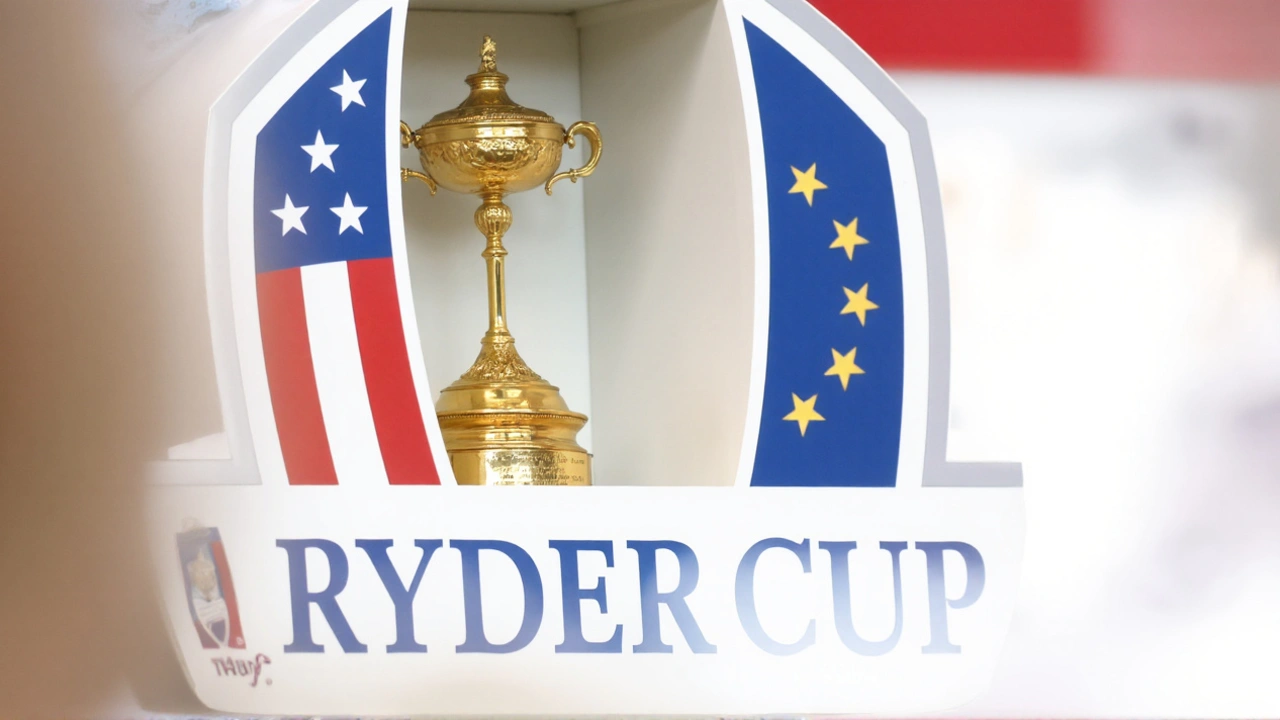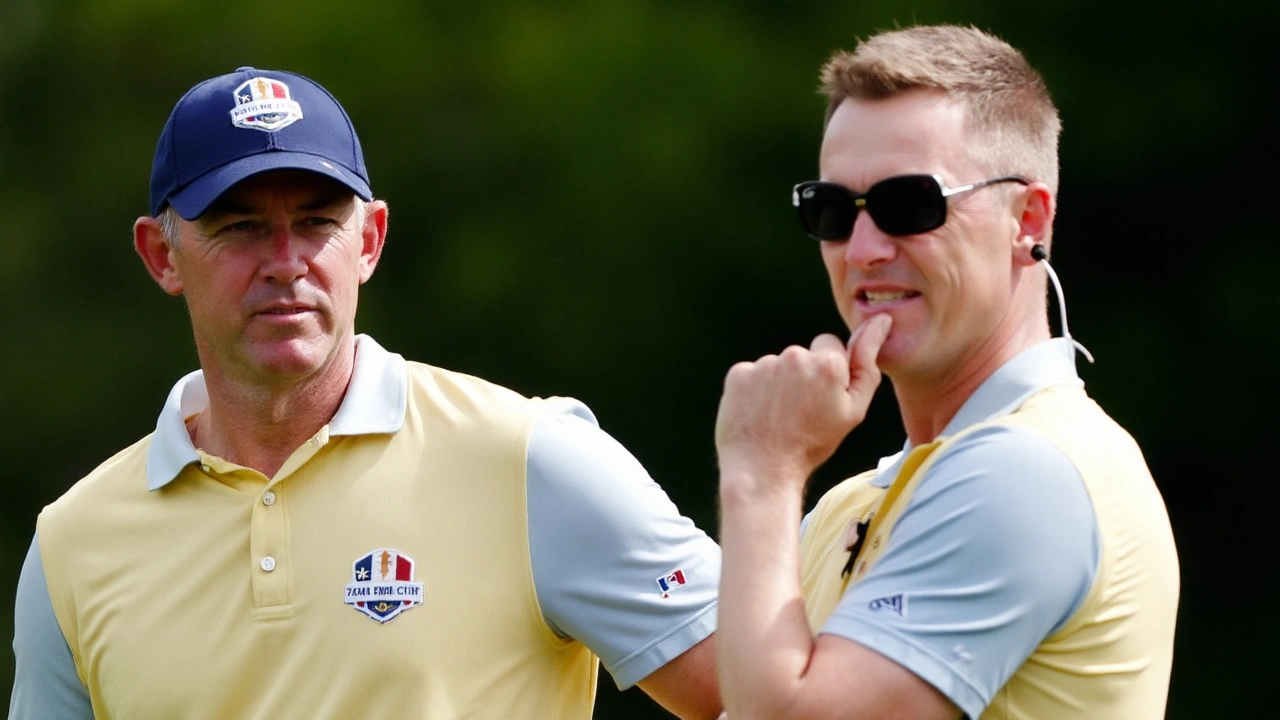USA Practice Groupings Reveal Possible Pairings
The buzz around Bethpage Black this week has been anything but quiet, even though the first full‑round practice was held without spectators. Captain Keegan Bradley used the quiet to shuffle his top‑ranked squad into three distinct groups, each seeming to showcase a different tactical angle.
Ryder Cup 2025 could see the power‑driving Bryson DeChambeau paired with the precision of Justin Thomas, a combo that might excel in four‑ball play where distance and accuracy both matter. Their Wednesday 9:45 a.m. group also included Ben Griffin and Cameron Young, giving Bradley a chance to see how a high‑flight player and a steadier iron‑player interact under pressure.
The 10:00 a.m. slot paired Harris English with Russell Henley, while the world No. 1 Scottie Scheffler and JJ Spaun rounded out the group. This mix of a dominant driver‑and‑putter with a more conventional shot‑maker could hint at a foursomes partnership that balances risk and safety.
Finally, the 10:15 a.m. quartet of Sam Burns, Patrick Cantlay, Collin Morikawa and Xander Schauffele reads like a masterclass in consistency. All four have shown an ability to keep scores low under tough conditions, suggesting Bradley might lock them together for the most critical matches.
- DeChambeau, Griffin, Thomas, Young – power meets precision
- English, Henley, Scheffler, Spaun – mix of styles
- Burns, Cantlay, Morikawa, Schauffele – consistency crew
Golf insiders say these groupings aren’t random; they’re a live scouting report. Bradley can see who talks, who respects each other's games, and who thrives when the pressure spikes on the infamous 16th and 17th holes.

Europe’s Strategic Sessions Offer Clues
Across the pond, Captain Luke Donald’s Europeans have been equally deliberate, even taking a pre‑Ryder Cup trip to New York to fine‑tune their approach before landing at Bethpage. Their Wednesday line‑ups started a half‑hour earlier than the Americans, perhaps to carve out extra practice time on the toughest parts of the course.
The 9:30 a.m. group – Tyrrell Hatton, Shane Lowry, Jon Rahm and Sepp Straka – blended seasoned major winners with a rising star. Rahm’s aggressive play alongside Hatton’s steady ball‑striking could signal a foursomes pairing that aims to seize early leads.
At 9:45 a.m., Matt Fitzpatrick, Viktor Hovland, Robert MacIntyre and Rory McIlroy took to the green. Three of these men have proven they can win match‑play formats, and pairing them together could be a test of who best complements McIlroy’s comeback instincts.
The final 10:00 a.m. grouping mixed youth and experience: Ludvig Aberg, Tommy Fleetwood, Rasmus Hojaard and Justin Rose. Aberg’s fresh perspective paired with Rose’s veteran savvy might be a trial run for a late‑day comeback strategy.
- Hatton, Lowry, Rahm, Straka – experience + youth
- Fitzpatrick, Hovland, MacIntyre, McIlroy – proven match‑play talent
- Aberg, Fleetwood, Hojaard, Rose – youth meets veteran savvy
Analysts note that Europe’s practice groups are focused on chemistry as much as course knowledge. Donald wants to see who can communicate on the fly, who can keep a steady rhythm when the wind whips over the 18th, and who can adapt when a partner’s ball lands in a tricky bunker.
Both captains are also using these sessions to experiment with specific hole strategies. The brutal 9‑hole stretch from the 12th to the 18th at Bethpage Black demands precise shot‑selection; grouping players with complementary strengths gives each captain a preview of who can execute under that pressure.
Home‑field advantage gives the United States a slight edge in total practice time, but Europe’s coordinated, purpose‑driven sessions show they won’t be easy opponents. As the Opening Ceremony draws near, fans will be watching every swing, every high‑five, and every strategic whisper for the first real clues about the line‑ups that could decide the fate of the 2025 Ryder Cup.

Madhu Murthi
September 26, 2025 AT 00:11🇺🇸 The United States is loading a tank of drivers – DeChambeau and Thomas together look like a demolition crew, ready to smash the fairways at Bethpage Black 😤💥
Amrinder Kahlon
October 2, 2025 AT 13:16Wow, because the only thing we've been missing is a power‑swing parade. Guess the Europeans will have to bring their magnifying glasses to see the ball.
Abhay patil
October 9, 2025 AT 02:22The practice groups on Bethpage Black are giving us a real glimpse into the strategic thinking of both captains.
What stands out is the deliberate mixing of raw power with surgical precision in the U.S. line‑ups.
Pairing DeChambeau with Thomas creates a classic four‑ball dynamic where distance can force a mistake and accuracy can capitalize.
Meanwhile, English and Henley bring a steadier rhythm that could be crucial on the unpredictable 16th and 17th holes.
Scheffler’s presence in the same group adds a clutch putting element that can swing a tight match.
The fourth U.S. group of Burns, Cantlay, Morikawa and Schauffele reads like a “no‑let‑up” board of consistency.
Each of those players has proven they can hold their nerve under pressure, which bodes well for the singles sessions.
Across the Atlantic, Donald’s Europeans are not shying away from similar experiments.
Hatton, Lowry, Rahm and Straka combine experience with youthful energy, a blend that could turn early leads into a momentum boost.
The Fitzpatrick‑Hovland‑MacIntyre‑McIlroy quartet is clearly a test of match‑play chemistry, especially with McIlroy’s comeback pedigree.
And the Aberg‑Fleetwood‑Hojaard‑Rose group shows a willingness to sacrifice the obvious for the unexpected.
Both captains appear to be hunting for pairs that can communicate on the fly, a skill that often decides a Ryder Cup match more than raw talent.
The emphasis on the 12‑18 stretch of holes, with its brutal wind and narrow fairways, forces them to think about shot‑selection as a team.
If the U.S. can leverage their home‑course familiarity while Europe brings tighter knit coordination, we could see a classic showdown.
Fans should keep an eye on how each grouping reacts under the pressure of a live‑ball situation, not just a practice swing.
In the end, the real pairings will likely be those who can turn a single bad shot into a shared recovery, not those who crumble in isolation.
Amber Brewer
October 15, 2025 AT 15:27From a tactical standpoint, pairing Scheffler with Spaun could give the U.S. a safety net on the 16th – Spaun’s calm under pressure complements Scheffler’s power, making them a solid foursomes option.
Kim Coulter
October 22, 2025 AT 04:32When you line up a nation’s finest, you’re not just playing golf; you’re declaring a cultural assertion that your soil produces the true masters of the game – let the stars shine for America.
Michelle Toale-Burke
October 28, 2025 AT 16:38Can’t wait for the drama 😭
Amy Paradise
November 4, 2025 AT 05:43Exactly, and don’t forget the wind on the 18th – a well‑matched duo can turn that gust into a scoring opportunity rather than a disaster.
Janette Cybulski
November 10, 2025 AT 18:49Feeling the excitement too, the energy is already building for an unforgettable showdown.
Mildred Alonzo
November 17, 2025 AT 07:54The European groupings show a thoughtful blend of veterans and newcomers, which might give them the adaptability needed on the tricky Black course.
Elizabeth Bennett
November 23, 2025 AT 21:00True, especially with Aberg’s fresh perspective; his willingness to experiment could be the X‑factor against the U.S. power game.
linda menuhin
November 30, 2025 AT 10:05Im not sure if the US will dominate or if the europeans will pull an upset.
Jeff Abbott
December 6, 2025 AT 23:11Nice try, but the only thing you’ll pull is a bag of excuses when the U.S. steamrolls them.